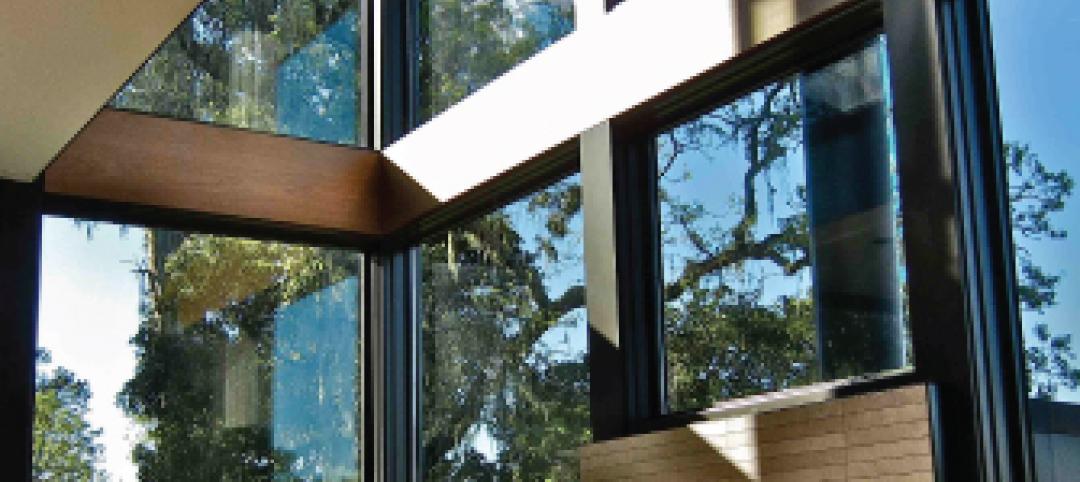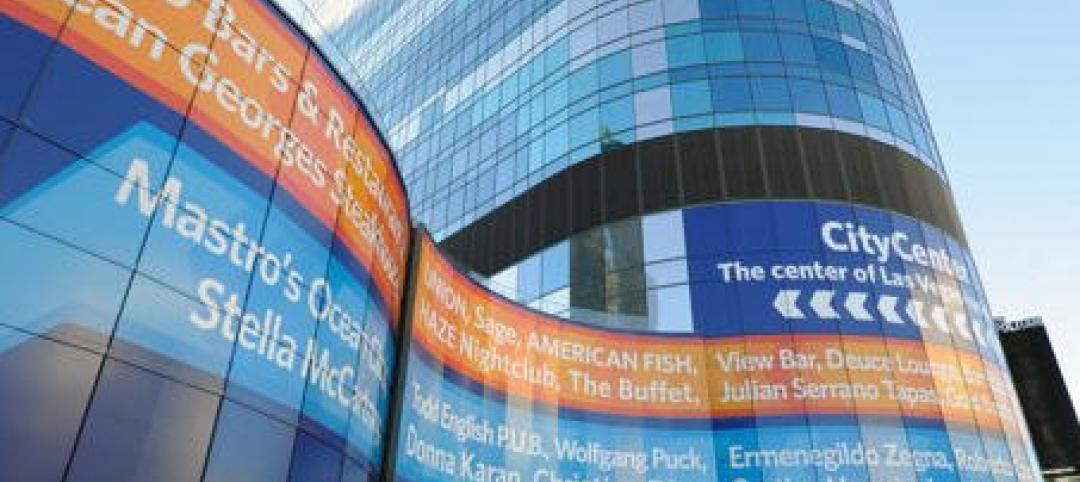MySmartPlans is a relatively new software tool that uses Internet-enabled collaboration to make project-related activities transparent and ensure that current documentation is conveniently accessible to all responsible parties on a project.
To date, $5.2 billion worth of live projects have used MySmartPlans, including more than 100 projects in 22 states. General contractor JE Dunn has used the software on more than 40 projects, including a $740 million project for the U.S. General Services Administration.
MySmartPlans is a hybrid document management tool that updates itself when connected to the Internet but also provides document access even when an online connection is not available. It was launched in 2007 by Marathon Digital Services, Kansas City, Mo., the brainchild of Dominick and Shelley Armato, he the owner of a well-established commercial painting contractor firm, she a commercial real estate broker.
Two features set MySmartPlans apart from other document sharing solutions. First, each project is assigned a dedicated project information manager who continually monitors documents posted by Building Team members and other project participants to make sure the documents are properly labeled and filed. The project information manager also checks all documents for organization, completeness, and accuracy; adds bookmarks and creates links to related documents; and optimizes each document so it takes up minimal space and is compiled in a standardized, easily opened format.
The other distinguishing feature is MySmartPlans’ closeout dashboard, which has turned out to be very popular with users. Documents are organized according to CSI divisions and can be accessed through an online dashboard, which is also monitored by the project information manager. Based on a customizable template, the dashboard can include additional resources like an embedded Google map of the project location.
How two building teams are using the software
The National Nuclear Security Administration Campus, in Kansas City, Mo., and the University of Missouri–Kansas City, were among the early adopters of MySmartPlans.
The NNSA Campus project, a public-private partnership, encompasses $540 million in hard construction costs, $200 million in associated soft costs, and $250 million in manufacturing machinery relocation expenses. The project will replace a 60-year-old manufacturing plant with a new 1.5-million-sf, LEED Gold facility that will house 2,500 workers, who will manufacture non-nuclear mechanical, electronic, and engineered materials for national defense systems.
Seven ways to build smart
- Be prepared. Because the MySmartPlans project information manager goes through every document posted on the dashboard to make sure it is optimized, complete, and properly identified, you won’t find yourself missing pages in the middle of a project meeting.
- Simplify your filing. All project documentation—drawings, review comments, meeting minutes, project schedules, contact information—is available through the MySmartPlans dashboard, organized by CSI division. That means you no longer need to organize and file project-related documents.
- Save money. Reproduction costs and associated delivery charges drop significantly.
- Save time. Because they are being assembled throughout the life of the project, closeout documents are available almost immediately upon completion. No more waiting six months or more to get the manuals for those VAV boxes.
- Avoid interruptions. UMKC’s Greg Silkman says, “I give our clients access to the dashboard. They don’t have to rely on me for updates because current information is available on the dashboard and they can access it when it is convenient for them.”
- Stop digging through file cabinets for obscure submittals. They are right there on the dashboard.
- Point and click for information. SmartRooms—photos with links to various features and pieces of equipment—lets you go straight to the associated documentation with one click. It’s a standard feature; there’s no extra charge.
It is being constructed under the auspices of the General Services Administration for NNSA and developer/lessor CenterPoint Zimmer LLC, an entity consisting of CenterPoint Properties, Oak Brook, Ill., and Zimmer Real Estate Services, Kansas City, Mo. The Building Team consists of HNTB, SSOE, Johnson Controls, and JE Dunn Construction, with Gastinger Walker Harden Architects as a consultant to GSA.
GSA’s Project Manager, Doug Benton, PE, learned about MySmartPlans a few years ago and invited Shelley Armato to demonstrate it to GSA staff. Benton then recommended the collaboration tool to the developer, who contracted for its use.
Benton even took the unusual step of obtaining security clearance for Marathon staff to work inside GSA’s firewall exclusively for this project. “Initially, the primary thing being exchanged was design information, like CAD data files that tend to be in the range of 100 MB,” says Benton. Such Internet capabilities were far beyond any he had available on previous projects.
Early in the design process, NNSA, as the tenant, put together an extensive list of requirements for the project, including a database with thousands of pieces of manufacturing equipment that eventually would have to be relocated from the old facility to the new one.
The design-build development team began by designing the facility, concurrently modeling it in Autodesk Revit. That model then went to the GC, JE Dunn, which worked with the subcontractors to build everything in 3D in the construction model––again, before any physical construction had begun. That process enabled engineers and construction managers sitting in a CAD war room to work out all the construction interference issues before the structural elements went into fabrication.
The mechanical contractor, US Engineering, set up shop across the road from the construction, downloading the data into CNC machines, fabricating ductwork based on the computer model, and making the shipping of even large pipes and ductwork easy and cost-effective. Furthermore, with dimensions coming right out of the virtual model, the piping and ductwork can be fabricated in a shop environment at a much lower cost and with much better quality control than can be done on site by hand.
The NNSA project now has more than a thousand registered users, representing about 175 organizations, mostly construction subcontractors. Benton notes that this is the first GSA lease project to use an online collaboration tool to such an extent. He credits much of the success in collaborating on this project to being able to use the Internet so effectively.
Benton says the project is coming in on schedule and within budget. NNSA expects to begin moving into its new Kansas City campus in January. Upon completion of the project in 2014, all of the construction documentation will be assembled in a closeout package and turned over to the NNSA’s operations and maintenance personnel.
Seeking long-term payoff at UMKC
The University of Missouri–Kansas City has used MySmartPlans on a variety of projects. Greg Silkman, UMKC’s Manager of Planning, Design and Construction, was introduced to MySmartPlans about four years ago. At first, he liked its potential as a maintenance tool but was not convinced it would work on a major design project.
As a test, Marathon created a closeout dashboard based on the as-built project documents for a recently completed university project. When Silkman showed the dashboard to his maintenance supervisors, they agreed that MySmartPlans would improve their ability to maintain campus buildings.
Since then the university has completed a dozen or so projects using MySmartPlans for design as well as construction, most recently for a 1,500-space, $26.3 million parking garage. The five-level structure, which opened in September, provides a pathway to the UMKC Volker Campus and relocates the campus police station. Elevated bridges offer pedestrian access to the student union and performing arts center. The Building Team consisted of BNIM, Walker Parking Consultants, and JE Dunn Construction.
“MySmartPlans is a huge benefit for construction,” Silkman says. “But the biggest benefit of using it is for the life of the building, which could be 60 to 100 years.” +
Related Stories
| Mar 19, 2012
Skanska promotes Saunders to VP/GM of Bayshore Concrete Products
During his more than 13 years with Bayshore, Saunders has provided products for Victory Bridge in New Jersey, Route 52 Causeway in Ocean City, N.J., and for numerous piers at Naval Station Norfolk and the Norfolk Naval Shipyard.
| Mar 19, 2012
Smith Carter joins forces with Genivar
Smith Carter has a workforce of some 190 employees and designs complex buildings in challenging environments.
| Mar 19, 2012
HKS Selected for Baylor Medical Center at Waxahachie
Baylor Medical Center at Waxahachiewill incorporate advanced technology including telemedicine, digital imaging, remote patient monitoring, electronic medical records and computer patient records.
| Mar 19, 2012
Mixed-use project redefines Midtown District in Plantation, Fla.
Stiles Construction is building the residential complex, which is one of Broward County’s first multifamily rental communities designed to achieve LEED certification from the USGBC.
| Mar 16, 2012
Temporary fix to CityCenter's Harmon would cost $2 million, contractor says
By contrast, CityCenter half-owner and developer MGM Resorts International determined last year that the Harmon would collapse in a strong quake and can't be fixed in an economical way. It favors implosion at a cost of $30 million.
| Mar 16, 2012
Work on Oxnard, Calif. shopping center resumes after a three-year hiatus
Stalled since 2009, developers of the Collection at RiverPark decided to restart construction on the outdoor mall.
| Mar 16, 2012
Stego embarks on HPD Pilot Program
Vapor barrier manufacturer strives to provide better green choices to designers and builders.
| Mar 16, 2012
Marvin Windows and Doors accepting entries for fourth-annual myMarvin Architect’s Challenge
Architects in U.S. and abroad offered the chance to showcase their very best work.
| Mar 14, 2012
Hearing to decide fate of unfinished Harmon in Las Vegas under way
The testimony began with CityCenter consulting engineer Chukwuma Ekwueme methodically showing photo after photo of parts of the Harmon, where he and his team had chipped away the concrete pillars and beams to examine the steel reinforcing bars inside.

















